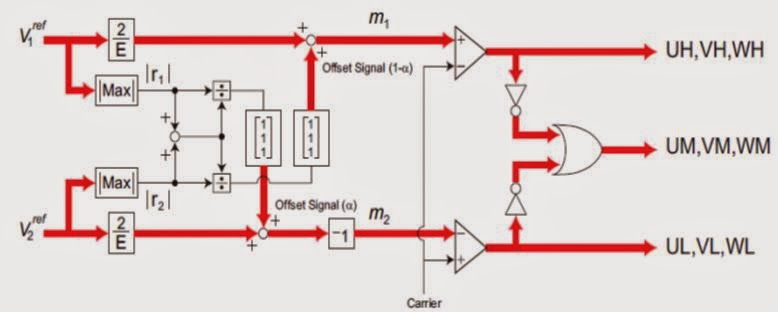Enhancement of Voltage Quality
in Isolated Power Systems
ABSTRACT
The use of series compensators (SCs) in improving voltage
quality of isolated power systems is considered. The roles of the compensators
are to mitigate the effects of momentary voltage sags/swells, and to control
the level of harmonic distortions in the networks. A control strategy for the
SC is developed to regulate power flow. This is achieved through phase
adjustment of load terminal voltage. It leads to an increase in the ride through
capability of loads to the voltage sags/swells. Validity of the technique is
illustrated through simulation.
KEYWORDS
1.
Harmonic power
flow
2.
Isolated power
system
3.
phase shift
4.
Series compensation
SOFTWARE:
Matlab/Simulink
BLOCK DIAGRAM:
Fig.
1.Typical isolated power system installed with an SC.
CONCLUSION:
Voltage
quality improvement in an isolated power system through series compensation has
been investigated. The power system contains significant proportion of
fluctuating nonlinear load and a high level of harmonic distortions is
observed. A method to control the injection voltage of the SC so that it can mitigate
the effects of the harmonics has been proposed. The SC is also designed to
maintain the fundamental frequency component of the terminal voltage of
protected sensitive load. In the process of harmonic voltage compensation, it
is shown that power exchange exists between the SC and the external network. Based
on the analysis of the harmonic real power flow in the power system, it is seen
that the SC would import harmonic real power from the external system. A new SC
control strategy is then proposed which involves the phase adjustment of the
fundamental frequency component of the sensitive load terminal voltage. Through
the analysis on the power exchange it is shown that the load ride through
capability during voltage sag can be improved with the support of the harmonic
real power absorbed by the SC. The capacity of the SC required is modest and,
therefore, makes it a viable device for such an application. Simulations have
confirmed the effectiveness of the proposed method, as it is applied on the SC
to achieve improved quality of supply in the power system.
REFERENCES:
[1]
I. Jonasson and L. Soder, “Power quality on ships-a questionnaire evaluation concerning
island power system,” in Proc. IEEE Power Eng. Soc. Summer Meeting,
Jul. 2001, vol. 15–19, pp. 216–221.
[2]
J. J. Graham, C. L. Halsall, and I. S. McKay, “Isolated power systems: Problems
of waveform distortion due to thyristor converter loading,” in Proc. 4th
Int. Conf. Power Electronics and Variable-Speed Drives, Jul. 1990, vol.
17–19, pp. 327–330.
[3]
ITI (CBEMA) Curve Application Note, [Online]. Available: http://www.itic.org.,
Inf. Technol. Ind. Council (ITI).
[4]
J. C. Das, “Passive filter—Potentialities and limitations,” IEEE Trans. Ind.
Appl., vol. 40, no. 1, pp. 232–241, Jan. 2004.
[5]
H. Akagi, “New trends in active filter for power conditioning,” IEEE Trans.
Ind. Appl., vol. 32, no. 6, pp. 1312–1322, Nov. 1996.








